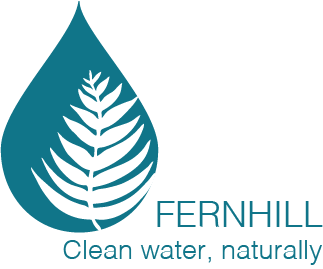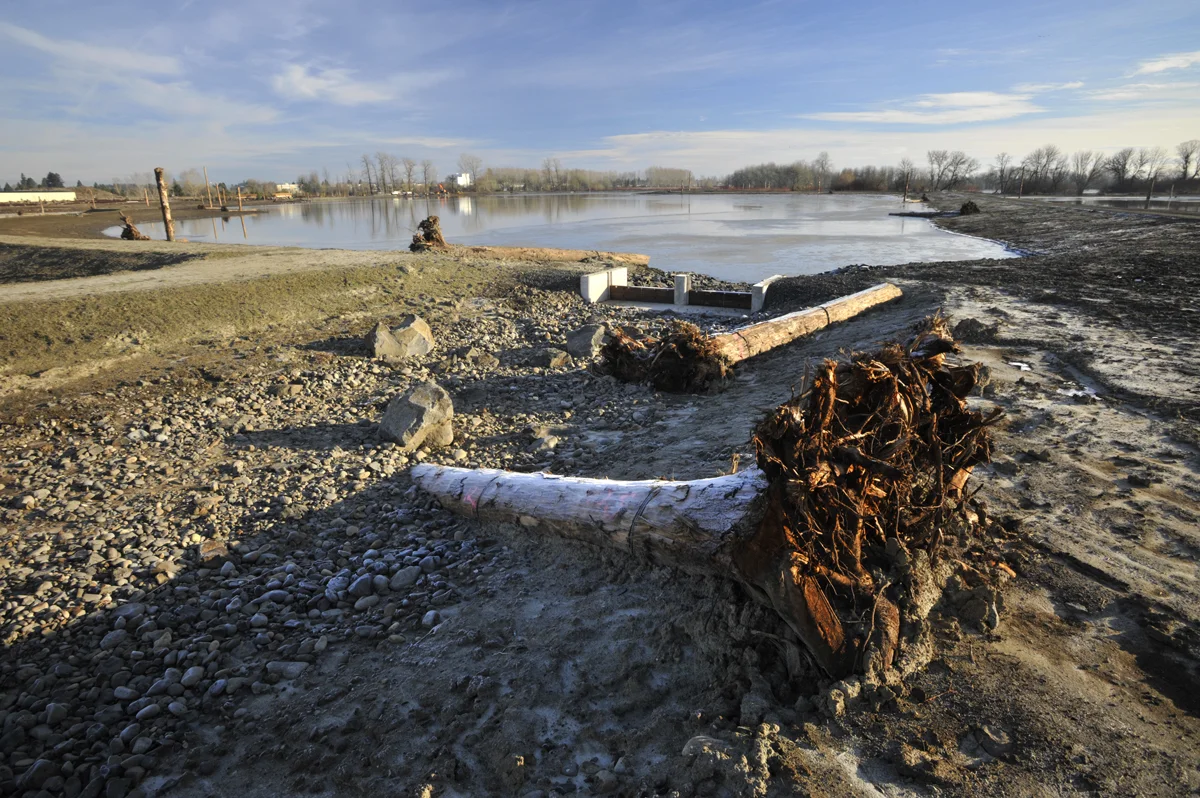The Design and Planning of Fernhill
For the past several years, Clean Water Services staff and consultants have worked extensively on the design and construction of the Natural Treatment System (NTS) at Fernhill. It has been designed with precise depths, slopes and channels in order to guide water through wetland plants and soil to further cleanse, cool and naturalize water before it's returned to the Tualatin River.
Optimizing Project Costs
Wastewater treatment during the summer at Forest Grove is not possible without modifications to the treatment facility. Instead of investing in concrete and steel infrastructure at Clean Water Services' Rock Creek Facility to treat these flows, the NTS at Fernhill was developed to provide an “ecosystem process” that eliminates conventional treatment systems. The NTS acts as a bridge from conventional wastewater treatment to river discharge. The project meets all federal and state permit requirements. Offset project costs for treating the water naturally are roughly $13 million.
Innovations
Clean Water Services scientists are researching the potential for using natural biological processes that occur between water, plants, and microorganisms to remove contaminates from water.
Floating Islands
In floating wetlands, plants grow out of a dense but porous foundation that allows roots to grow throughout. Plants are beautiful and provide habitat while the foundation and roots create a surface for microbes to live. Bacteria and other microorganisms digest organic matter and nutrients circulating in the water and produce a sticky film called biofilm that traps total suspended solids and fine particulates.
Nutrient Filter
The current nutrient filter design, aims to remove ammonia, which is harmful to fish and wildlife. This filter uses a six-foot deep bed of gravel that acts as a host for ammonia-removing microbes that occur naturally in streams and rivers. Clean Water Services’ approach is to actively maximize the population of these microbes (many times more than in nature) so that the filter removes ammonia before water is returned to the Tualatin River. Once the system has been optimized, the surrounding area will be landscaped and an ADA accessible trail will circle the facility.
Denitrification Wetlands
This project evaluated the effectivness of using wood chips and biochar (a charcoal-like substance) media to reduce copper and nitrate in water. Effluent from the Nutrient Filter was fed into two pilot reactors where several flow varibles and media types were tested over a two year period. A substantial reduction of both nitrate and copper was observed year-round at a range of flow rates.
Algae Study
Photo courtesy of USGS
Clean Water Services partnered with the United States Geological Survey (USGS) to better understand how treated water from the Fernhill NTS impacts water quality in the Tualatin River. The study collected data over two summers (2019 and 2020) and is focusing on the presence and abundance of various types of beneficial algal species and harmful cyanobacteria in the river. The wetlands of the NTS may seed beneficial algae that grow as they travel downstream, increasing dissolved oxygen in the lower Tualatin River. Conversely, if water from the NTS contains cyanobacteria, there could be negative water quality impacts downstream.
Data from the 2019 study suggests that NTS water quality and algal seeding have measurable effects downstream. Monitoring results will be analyzed alongside operational records to evaluate whether certain actions can be taken in the NTS to enhance water quality and promote beneficial algal growth.
Fernhill Planning Documents
Clean Water Services has implemented and is furthering many plans for this site. Learn more about the efforts we have been making at Fernhill in the planning documents below.
For more information, please contact Jared Kinnear.



